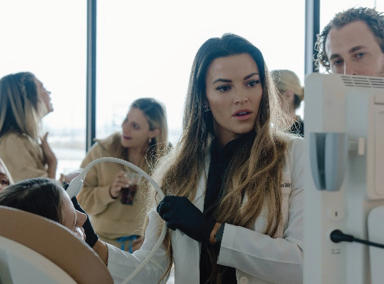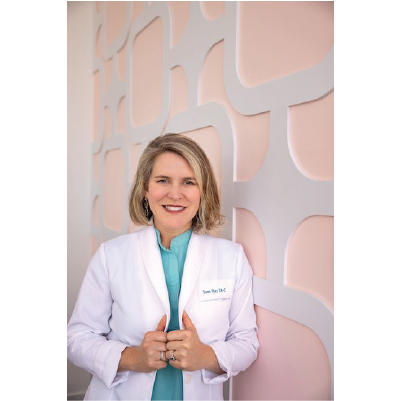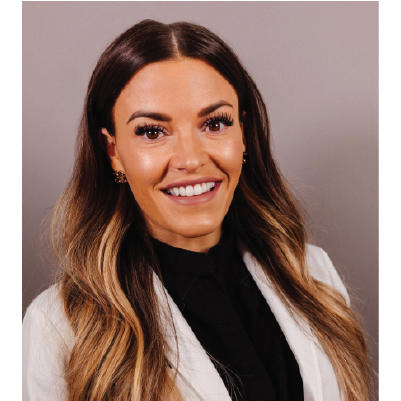
Ultrasound examinations have become increasingly common for use in facial aesthetic practices. By capturing images of a patient’s internal structures before performing a procedure, clinicians and aestheticians can plan injections more accurately by visualizing the vascular mapping of the face, in addition to measuring dermal thickness, identifying superficial and deep fat pads, avoiding the parotid gland, tracing the location of mimetic muscles, and more. Visualizing the patient’s internal facial structure allows the professional to perform the injection more confidently and ensure a higher degree of patient safety.
To better understand the emerging trends in ultrasound for facial aesthetic imaging, the Mindray team recently met with leading experts in aesthetic procedures to gauge the current market, reflect on the current challenges and demands, and discuss the future of ultrasound in facial aesthetics. In this blog, you’ll gain insights from:
What type of aesthetic procedures are you performing in your practice in which you utilize ultrasound?
Dani: I own a med spa that does a full array of aesthetic procedures, from radiofrequency micro-needling to chemical peels to injectables and IV services. I actually use ultrasound for a lot of those. Mostly, I use ultrasound and filler injections. I use ultrasound to determine the safe placement of filler and I use it to manage complications. I get referred a lot of complications from other clinics to help manage them, which is really rewarding. I love that aspect of my business.
I also use ultrasound in even some of the aesthetic sides of things, like determining the best depth for radiofrequency micro-needling procedures to determine the depth of the fat tissue and to help make our aesthetic side have the best outcomes. I also even use ultrasound for IV services.
Dr. Cho: I use ultrasound both for face and body applications. As an example, today, I was doing a mommy makeover. I’m doing different blocks pre-surgery before making an incision to help. Whether it’s a TAP block or PEC block or measuring the width of the diastasis recti and assess the subcutaneous tissue thickness.
On the face, I see several ultrasound applications for facial aesthetics. At the beginner stage, and still a very important stage, is vascular mapping. Is there a vessel of significance that I need to be concerned about or not? If so, do I need to modify my technique to avoid that vessel? I think that’s probably the most important way to improve safety for injectors who want to bring it into their practice.
Ultrasound can also be used to study facial anatomy, so I know where the muscles are. If I’m injecting the masseter muscle and I know that the parotid is in that same general vicinity, it would be helpful to know the depth of the masseter muscle and how thick the parotid is. I’m sure many neuromodulators have been inadvertently placed in the parotid. Separately, I see a lot of filler product being injected into the parotid when the intended target is the subcutaneous layer of the pre-auricular area.
One of the things injectors worry about the most is intravascular occlusions or intravascular events. When faced with referrals for these situations, ultrasound enables me to identify the vessel involved, cannulate the vessel and then inject the appropriate medications to help treat an occluded vessel. This can help mitigate tissue necrosis, which is one of the potential sequelae of having an intravascular injection of a filler product.
Shelby: At RUMA Medical Aesthetics, ultrasound plays a big role in a variety of procedures from improving accuracy and producing quantifiable results to safety mapping prior to injecting high-risk areas. It’s crucial to utilize when injecting delicate areas, such as the temples, where there are ten distinct layers. To ensure the safest injection, we rely heavily on ultrasound to pinpoint the appropriate layers.
We often use ultrasound to scan new patients entering the practice. For example, when a patient with a 12-year history of filler or biostimulator injections sits in the treatment chair and requests filler under their eyes, we first prioritize a thorough assessment via ultrasound before proceeding. It’s essential to understand the existing conditions before any intervention. Through ultrasound, we’ve made surprising discoveries, like silicone and CAHA in the tear troughs— inappropriately placed products you wouldn’t want to disturb.
Ultrasound is also used in procedures involving debulking, such as using deoxycholic acid to reduce a thick double chin or drooping jowls. By utilizing ultrasound, we measure the superficial fat in the area prior to injections. This data allows us to plan the treatment more precisely and effectively. We monitor the fat reduction progress throughout consecutive sessions, providing quantifiable results for the patient. Unlike the past, where we relied solely on before-and-after photos.
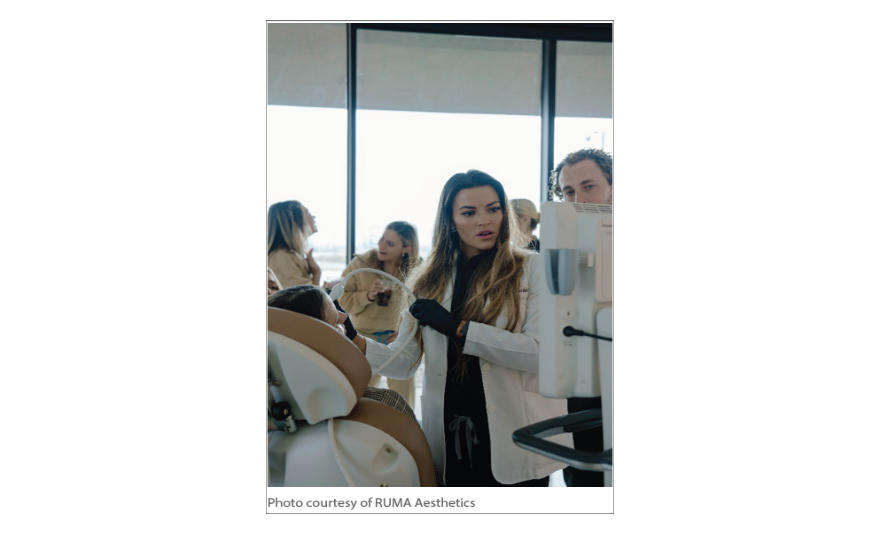
What is the current state of the workforce in the aesthetic industry and what are the issues that impact your staff the most?
Dani: Currently, I think the issues that the aesthetic industry is facing is just a huge growth based on- the sequelae of the pandemic. A lot of nurses and healthcare workers had a mass exodus from hospital work and were looking for something more fulfilling, higher paying, lighter in burden, and they have come to aesthetics. A lot of the issues that providers face are not enough jobs.
They want to find a place, there’s just a huge competition for work to get a job in a med spa as an injector, as an aesthetician, so it’s an interesting situation where tons of people want to get into it, but there’s not that many opportunities. There are more and more med spas popping up, but another part of that is that the workforce for administrative support is a challenge because many of those people in administrative roles during the pandemic went to things like work-from-home-type jobs have become more the norm.
Dr. Cho: Staff training and development is always a key component. Initially, COVID led to a little more turnover, as some staff chose to stay at home with their kids or work from home. The initial lull from COVID turned into a surge with the demand for both surgical and non-surgical procedures grew. With the turnaround, it has become ever more important to focus on investing in your staff through training, educating, and developing. Balancing this investment with patient care is a challenge that we all face as small businesses.
Shelby: The workforce dynamic in the aesthetic industry is interesting. I don’t believe there’s a shortage of support staff; in fact, there’s a strong interest in working in med spas and the medical aesthetics field. It’s an enjoyable environment where patients are generally healthy and happy to undergo treatment. We have dedicated aesthetic assistants who support our injectors, and every time we hire, we receive no shortage of applications. So, finding skilled assistants isn’t an issue, although we do invest significantly in their training and have implemented a comprehensive aesthetic assistant training program.
Additionally, many professionals like nurses, doctors, physician assistants (PAs), and nurse practitioners (NPs) are eager to enter the industry. However, specialized training is essential because there isn’t a standardized board or certification for aesthetic medicine. The field operates somewhat like the “wild, wild west,” with varying levels of autonomy in different states. In some regions, doctors and nurse practitioners exclusively handle injections, while in others, there’s more flexibility in the roles practitioners can assume. Bottom line, any position in this industry requires a great amount of training, development, and support which can be a challenge for small business owners. Over the last 5 years, we’ve decided to really invest in our team members and continuously develop them to succeed in their roles.
How has utilizing ultrasound to perform facial aesthetics helped to improve patient outcomes and satisfaction?
Dani: Ultrasound can help to prevent complications. One of my key messages in my courses is, “Don’t get an ultrasound because you’re thinking that you’ll have it on hand in the case of a vascular occlusion, have an ultrasound on hand so you don’t ever get one”. If you’re using ultrasound correctly and you’ve been trained well on it, then you can minimize some serious complications like vascular occlusion.
You can manage other complications that oftentimes arise more innocently, like nodules, and you can manage those a lot easier with ultrasound. I think the quality of care is dramatically on the rise when you add ultrasound into one of your modalities for injecting.
Dr. Cho: I feel more confident and safe injecting after I’ve pre-scanned a patient and identified the facial anatomy for the patient in front of me, the vascular anatomy for the patient in front of me. Certain areas are higher risk in my mind than others. In those higher-risk areas, I always get an ultrasound before injecting.
I think my practice has only grown since I’ve been talking, teaching and using ultrasound in my practice. I think other injectors know that I have an ultrasound, they know that I’m proficient at it, they know that I teach it. I get many referrals to help manage complex patients or injection complications. Often, the referring injectors may even come with the patient because they want to see and learn and understand why a complication is happening and how to resolve it.
Shelby: Every time we use the ultrasound, our patients are genuinely impressed and appreciative because they know we are providing an elevated level of safety and quality of care. It has helped me most in cases of serious complications, where its quick visualization capability and precise, eye-needle-guided technology have been invaluable. It allows me to quickly understand the tissue plane and effectively address the patient’s issues.
More importantly, the device’s daily use for mapping our patients’ anatomy plays a crucial role in ensuring their safety and preventing complications. This preventative approach significantly reduces the occurrence of issues, another huge reason why we have it in our practice.
What is the current state of the workforce in the aesthetic industry and what are the issues that impact your staff the most?
Dani: Currently, I think the issues that the aesthetic industry is facing is just a huge growth based on- the sequelae of the pandemic. A lot of nurses and healthcare workers had a mass exodus from hospital work and were looking for something more fulfilling, higher paying, lighter in burden, and they have come to aesthetics. A lot of the issues that providers face are not enough jobs.
They want to find a place, there’s just a huge competition for work to get a job in a med spa as an injector, as an aesthetician, so it’s an interesting situation where tons of people want to get into it, but there’s not that many opportunities. There are more and more med spas popping up, but another part of that is that the workforce for administrative support is a challenge because many of those people in administrative roles during the pandemic went to things like work-from-home-type jobs have become more the norm.
Dr. Cho: Staff training and development is always a key component. Initially, COVID led to a little more turnover, as some staff chose to stay at home with their kids or work from home. The initial lull from COVID turned into a surge with the demand for both surgical and non-surgical procedures grew. With the turnaround, it has become ever more important to focus on investing in your staff through training, educating, and developing. Balancing this investment with patient care is a challenge that we all face as small businesses.
Shelby: The workforce dynamic in the aesthetic industry is interesting. I don’t believe there’s a shortage of support staff; in fact, there’s a strong interest in working in med spas and the medical aesthetics field. It’s an enjoyable environment where patients are generally healthy and happy to undergo treatment. We have dedicated aesthetic assistants who support our injectors, and every time we hire, we receive no shortage of applications. So, finding skilled assistants isn’t an issue, although we do invest significantly in their training and have implemented a comprehensive aesthetic assistant training program.
Additionally, many professionals like nurses, doctors, physician assistants (PAs), and nurse practitioners (NPs) are eager to enter the industry. However, specialized training is essential because there isn’t a standardized board or certification for aesthetic medicine. The field operates somewhat like the “wild, wild west,” with varying levels of autonomy in different states. In some regions, doctors and nurse practitioners exclusively handle injections, while in others, there’s more flexibility in the roles practitioners can assume. Bottom line, any position in this industry requires a great amount of training, development, and support which can be a challenge for small business owners. Over the last 5 years, we’ve decided to really invest in our team members and continuously develop them to succeed in their roles.
Have you seen any aesthetic procedures increasing or decreasing in number recently?
Dani: There’s the one-up one-over technique of injecting the temples, which was made popular a few years ago. If you go 1 centimeter up the temporal crest and 1 centimeter posteriorly, you will reach a safe spot. That has pretty much been debunked with ultrasound. You put an ultrasound in that one spot, and you can tell that there’s a deep temporal artery is very often lying there. I think that procedure, the gunshot temple with filler, is on the decline because of ultrasound. Temple injections have become a lot safer with ultrasound and I have also noticed that ultrasound-guided temple injections are now on the rise; they’ve swapped places.
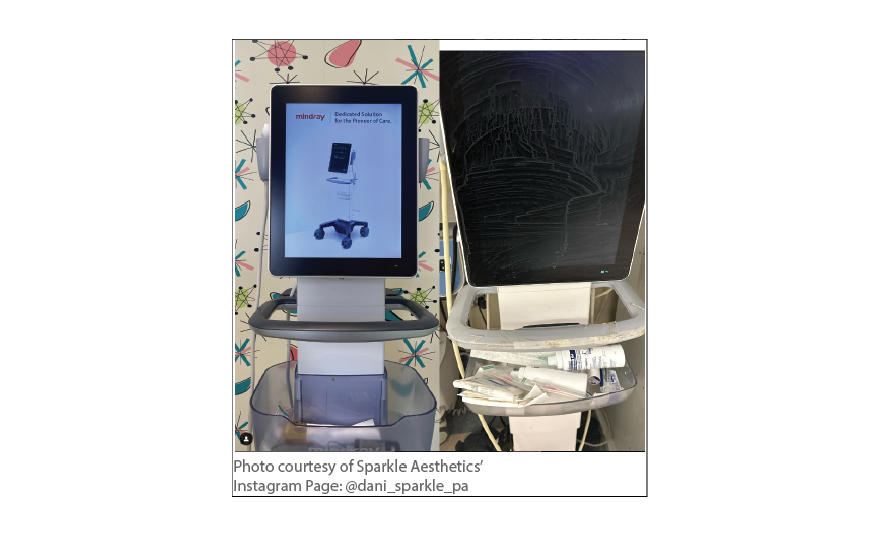
Dr. Cho: I wouldn’t necessarily claim to know trends. In my practice we have a healthy balance between surgical and non-surgical procedures. Even though I’m a surgeon, I still spend about a third of my time doing non-surgical facial procedures. That’s a balance I want to continue to maintain.
I’d say the overall trend is towards non-surgical, and the growth in the industry is in the non-surgical realm. That’s where med spa growth is probably exceeding surgical growth as an example. In terms of the pace of which people are asking for things like tummy tucks or breast augmentation, it’s probably much lower than that of getting Botox or fillers or other things.
Shelby: Many of our patients are interested in our biostimulating services, such as Radiesse® and Sculptra®, which encourage the body to produce its own collagen. At RUMA, we have taken this concept a step further by introducing a comprehensive regenerative medicine side and menu at our practice.
Over the past year, we have embraced regenerative medicine and bio-simulators more extensively, leading to a significant uptick in our practice. The COVID pandemic has played a role in this shift, prompting people to explore natural bio-simulating options rather than relying solely on fillers and neuromodulators to address their concerns. We are utilizing biologics derived from purified amniotic fluid and Wharton’s jelly with contain hundreds of advanced growth factors, proteins, and cytokines for facial rejuvenation, as well as sexual rejuvenation and joint/trigger point injections.
Why do you believe ultrasound has become widely accepted and used in facial aesthetics?
Dani: I think because we’re talking about it, it’s made these injections so much safer. I also think that, rightly so, many conscientious injectors have a lot of anxiety about injecting filler in the face because, before ultrasound, there was so much uncertainty about where you’re going to go and what’s a safe spot. Ultrasound, I always say it’s the cure for anxious injector syndrome. I think that it has helped a lot of injectors feel empowered to see beneath the skin to determine, “Oh, this is a safe spot; I can inject here”.
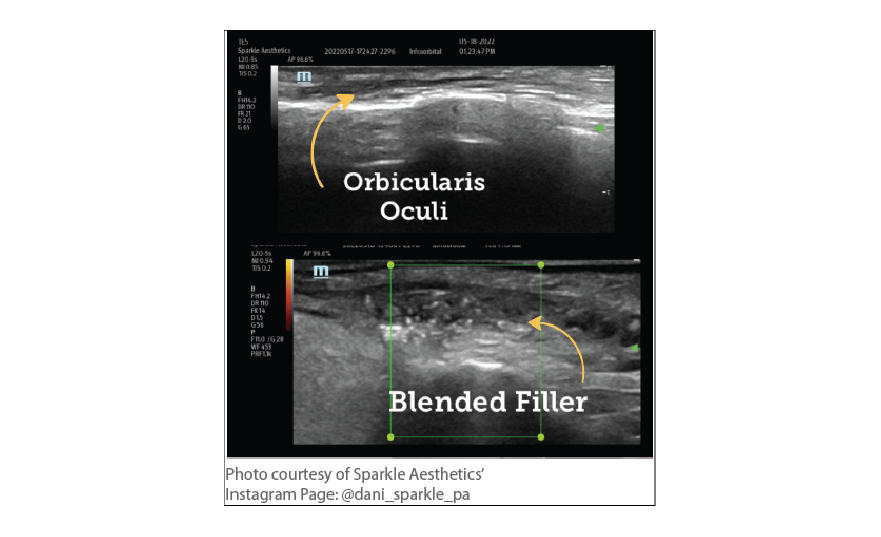
Dr. Cho: I would say ultrasound still is not widely accepted in facial aesthetics, meaning that the vast majority of injectors are not familiar with ultrasound and are not necessarily planning to bring it into their practices. We’re still in the early adopter phase of ultrasound finding its way into facial aesthetics. I think the curve is growing and it’s growing quickly, but it’s still a very, very small minority of providers that are incorporating ultrasound into their practice. Part of it is there are several barriers. One is the cost, and another is knowledge and education.
It only takes a few complications in your practice to say, “You know what? I must do something different because I don’t want this pattern to repeat itself.” That might be the motivation. Or they go to a conference, and hear a talk and say, “Oh, my gosh, I need to put that on my radar of things to learn.” Ultrasound adoption into one’s practice is very challenging as well. Focus on learning anatomy should precede incorporating ultrasound into one’s injection practice. However, for injectors that do take the step of adopting ultrasound can only fuel one’s growth as an injector. We’re still in its infancy. I’m hopeful that five years from now it’s going to be a very different environment.
Shelby: In the aesthetic industry, ultrasound has gained a lot of traction among industry leaders who share their success stories and highlight its role in enhancing patient safety. However, the biggest barrier is the learning curve. For example, before I even got the device, I personally spent over $5k on ultrasound training. I left feeling so defeated and overwhelmed. I realized that people have degrees in sonography, and it is not something I’m going to learn overnight. At the time, there were not a lot of training opportunities specific to ultrasound use in medical aesthetics.
After over 100 hours of studying and attending additional ultrasound courses, I created a virtual 101 ultrasound for aesthetics course as well as a hands-on course to educate all of our injectors and aestheticians on how to effectively utilize the ultrasound device. My goal was to create an efficient, easy-to-follow, easy-to-remember, and widely accessible ultrasound training program.
More and more aesthetic providers want to bring ultrasound into their practices, there’s just a learning barrier that I think can be easily overcome with proper, efficient training. I firmly believe that if a practice doesn’t incorporate ultrasound within the next five years, patients will likely overlook it, realizing that the practice probably doesn’t prioritize safety and innovation.
Are there new regulations that require ultrasound to be part of the aesthetic procedures?
Dani: I’m hearing about them. I think we’re getting there, but I’m not sure if we’ll be able to standardize this; it will take a long time. Based on my experience in the emergency room, when I started in the ER 15 years ago, ultrasound-guided procedures were not the norm. Then, it was a small kind of little cluster of people that were adopting ultrasound in the ER.
Dr. Cho: Yes. In Florida, there’s a mandate now that you use ultrasound-guided fat injections into the buttock because there have been reports of morbidity and mortality associated with that procedure and injecting it in the right plane is critical for safe buttock injections with fat. However, in facial aesthetics, I think we are years away from this even being a consideration because the adoption is not there just yet. I don’t know of any facial mandates for facial injections, but this would be good to revisit in 5-10 years, when the adoption is there, and that becomes the new standard of care. Right now, it’s far from being a standard of care.
Shelby: Not as of now, however, I could see that come to pass in the future. When I practiced in the intensive care unit, it took quite a while for ultrasound to become the standard of care for certain high-risk and complicated procedures. I’d like to see ultrasound become more widely used in aesthetics first, then perhaps some sort of regulations to follow.
What is the single biggest challenge in training your staff to perform aesthetics using ultrasound?
Dani: Just me having enough time to be able to train them. I have a nurse practitioner who works with me and is excited to learn more. Whenever I can, I bring her in to show her stuff and try to work with her, but it just takes time.
Dr. Cho: The training and understanding of the knowledge of anatomy. Right now, in my practice, I am the dominant ultrasound user, and even my wife, a dermatologist with a pretty good understanding of anatomy, is figuring out how to incorporate it into her workflow. Training and education have been the biggest hurdles.
Shelby: For me, it was taking the time to break down the history and technology of ultrasound, how it works, and how you can determine what is on the screen and relate that to your knowledge of anatomy. Understanding how the sound waves move and reflect helps to understand why certain products and tissues look different under ultrasound. You have to understand the basics of ultrasound technology before jumping into what the different tissue layers and products look like, so it doesn’t appear like 50 shades of gray. You also need to be able to identify normal anatomy before you can identify the abnormal. It definitely takes time and practice.
Do you foresee that billing/reimbursements for ultrasound guidance will eventually become part of these procedures?
Dani: I don’t think that they will. We’re a long way off from that because insurance reimbursements in the aesthetic world are very rare. We’re a cash-based business. Most med spas are, so I don’t think that will be widespread. I do think that people can start charging for their ultrasound exams. I charge for my ultrasound exam. I charge for ultrasound-guided procedures because there is a time commitment for me to spend doing an ultrasound on the face. I think the more people that are comfortable and adapt to ultrasound, they might start charging that fee.
Dr. Cho: I think we’re many years from that, but I do charge for managing complications and using ultrasound to either assess patients or use it as a means to guide a procedure. Initially, I didn’t just because it was a very steep learning curve and I just wanted to learn. Once there’s a certain level of proficiency, I do think there’s value in being able to charge for that knowledge and experience. It also adds peace of mind for patients.
Shelby: No – We operate on a cash-pay basis and will likely stay that way. Some practices may have a medical side that works with insurance, I know a few colleagues who do. I don’t anticipate that being a big factor in the future. However, I do recommend that once a provider is proficient with ultrasound, they charge for their time and expertise while utilizing the device.
What does the future hold for facial aesthetics?
Dani: That’s a tough one. It’s because it’s such a constantly evolving field that, hopefully, the quality of education continues to rise, and the quality of injectors continues to rise. Hopefully, more and more people will be comfortable getting these procedures and discussing them.
Dr. Cho: A lot of innovation is coming out in facial aesthetics and a lot of new injectable products are on the horizon. We do clinical trials in our practice and it is exciting to be part of the innovation development cycle. I think injectables will be with us for at least the next 10 years, but what we inject and how will continue to evolve.
I see the role of ultrasound only growing in importance as more products are coming into the marketplace, more injectors and providers want to pursue a career in aesthetics, and the need for education is only going to grow in that space as well.
Shelby: The future of medical aesthetics is an exciting one with constant innovation, new products, and new devices coming down the pipeline. The leaders in aesthetics whom I chose to rub elbows with are creating the future for aesthetics by prioritizing safety. My generation is a little bit different; we like to ask the why. We want to understand things on a different level. In the past, providers were trained in a certain way, and they just accepted it. That’s not how my brain works. I want to understand why are we putting this there versus here, at this step, at this location? Why are we using this product when we have another we could use?
We’re getting hungrier and hungrier and want to provide the best for our patients. This industry is getting more and more diluted, and the providers who will stay at the top will be the ones who prioritize all of those things and do not follow the norm. What’s coming and what’s going to continue to evolve is safety. That’s always going to be the priority and ultrasound is a big part of that.
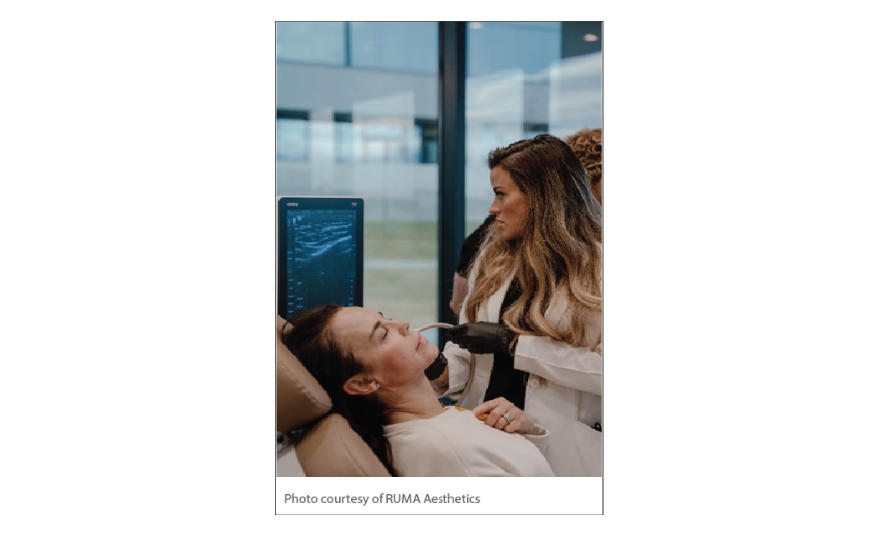
Any additional thoughts about facial aesthetics and ultrasound?
Dani: The main thing is that it’s a real learning curve. People need to be dedicated to practicing it and understand that they won’t just become an ultrasound guru overnight. They have to be dedicated to the art and the practice of it. There’s definitely an art to it, which is really my favorite part of it, just almost like being calm and waiting to have the anatomy appear. There’s just something cool about it that I’m passionate about and I hope that people, more and more, start to understand it is a really cool part of it, and it’s not just a thing you do overnight.
Dr. Cho: I feel more confident knowing I can do safer injections. Right now, fear is one of the big hurdles for providers doing injection procedures. Ultrasound can be a great way to combat that fear with actionable information for the provider, so they know how and where to avoid a vessel. Ultrasound will also help injectors manage their own complications when it happens. Though we’re still in our infancy I’m pleased with the adoption rate so far in the last five years and look forward to seeing this evolve over the next five years.
Shelby: We’ve trained over 600 providers over the last 12 months or so. One of the biggest things that upsets me is when providers mention they don’t want to invest in ultrasound due to time constraints or concerns about the initial cost and training. It is so important to dispel complacency. We cannot be lazy with what we do. This is a challenging specialty in medicine – a very difficult, high-risk specialty. We need to always challenge ourselves to learn more. Always grow and always have the mentality of community over competition and supporting each other.
We’re challenging all the providers that have been in the industry for many years, making people look so overfilled and unnatural; You cannot keep injecting people like this. You don’t have to keep taking their money and shoving things into their faces. There’s a better way to do it, a safer way, a more precise way. We need to be more ethical as medical providers. We need to prioritize what’s best for our patients. Safety is number one.
